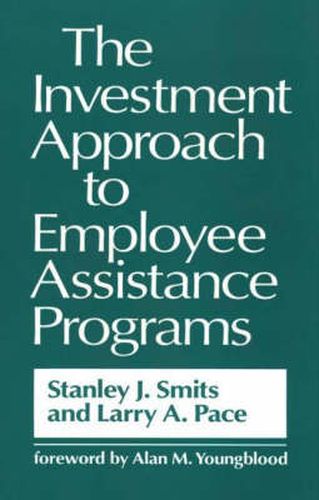Readings Newsletter
Become a Readings Member to make your shopping experience even easier.
Sign in or sign up for free!
You’re not far away from qualifying for FREE standard shipping within Australia
You’ve qualified for FREE standard shipping within Australia
The cart is loading…






The costs of substance abuse in the workplace are staggering. Workplace substance abuse adversely affects shareholders, the workforce, customers, and society. The employee assistance programme (EAP) has demonstrated its effectiveness in combatting the many types of personal problems that impair work performance. EAPs come in many forms, but each costs money. Smits and Pace provide a practical guide to help corporate decision makers construct and fund an EAP tailored to their needs. To help insure a reasonable return on the corporation’s EAP investment, the authors suggest linking it strategically to other human resource programmes and operating it in a businesslike manner with performance objectives, measurement systems, and accountability for agreed-upon outcomes. The investment model organises the book into three parts and concludes with an integrative case designed to help the reader apply the concepts presented in the first ten chapters. Part 1, Making the investment , focuses on needs, options and investment levels. It encourages the reader to think about the EAP as part of a portfolio of human resource programmes linked strategically to the organisation’s business strategy. Part 2, Managing the investment , examines the nuts and bolts of the implementation and operation of the EAP. Part 3, Monitoring the investment , advocates an EAP management information system to help improve EAP efficiency and effectiveness, to assess the return on investment, and to help guide corporate decision makers when reinvesting in their EAP.
$9.00 standard shipping within Australia
FREE standard shipping within Australia for orders over $100.00
Express & International shipping calculated at checkout
The costs of substance abuse in the workplace are staggering. Workplace substance abuse adversely affects shareholders, the workforce, customers, and society. The employee assistance programme (EAP) has demonstrated its effectiveness in combatting the many types of personal problems that impair work performance. EAPs come in many forms, but each costs money. Smits and Pace provide a practical guide to help corporate decision makers construct and fund an EAP tailored to their needs. To help insure a reasonable return on the corporation’s EAP investment, the authors suggest linking it strategically to other human resource programmes and operating it in a businesslike manner with performance objectives, measurement systems, and accountability for agreed-upon outcomes. The investment model organises the book into three parts and concludes with an integrative case designed to help the reader apply the concepts presented in the first ten chapters. Part 1, Making the investment , focuses on needs, options and investment levels. It encourages the reader to think about the EAP as part of a portfolio of human resource programmes linked strategically to the organisation’s business strategy. Part 2, Managing the investment , examines the nuts and bolts of the implementation and operation of the EAP. Part 3, Monitoring the investment , advocates an EAP management information system to help improve EAP efficiency and effectiveness, to assess the return on investment, and to help guide corporate decision makers when reinvesting in their EAP.